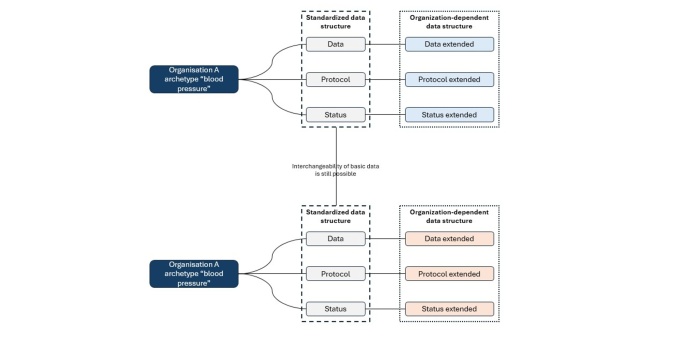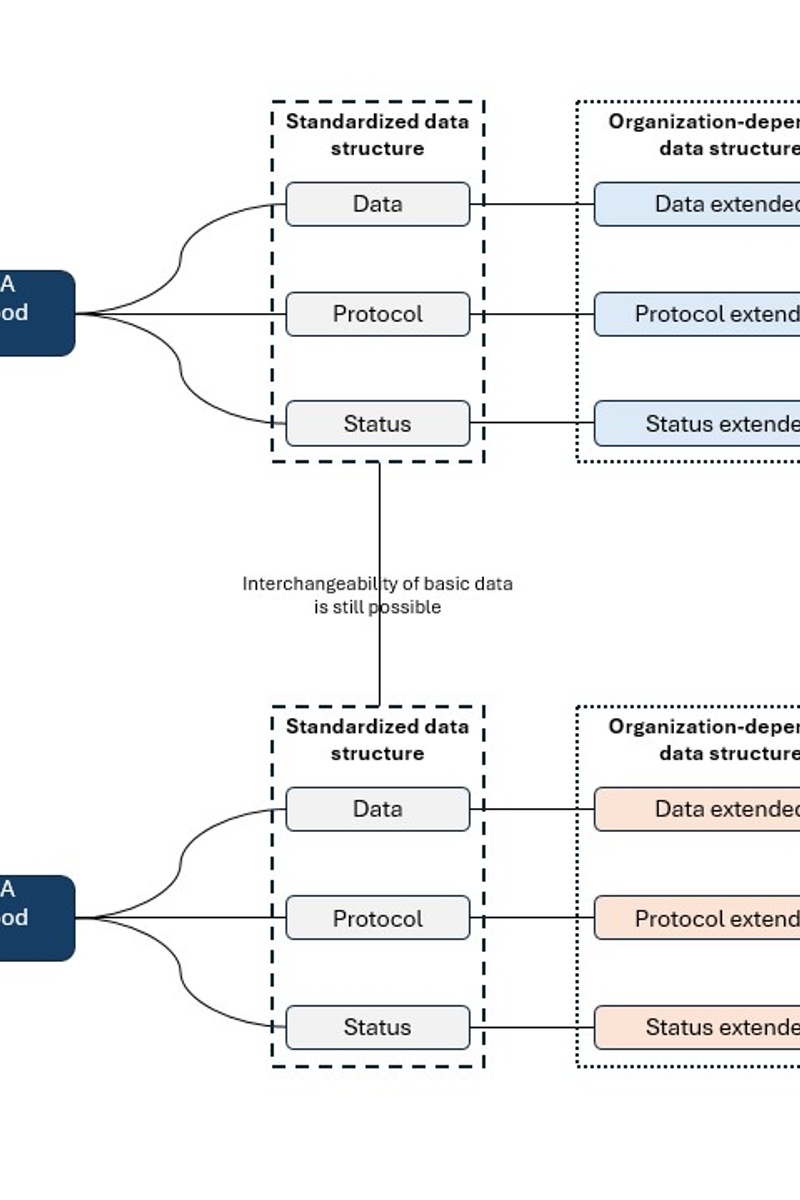9. May 2025 By Dennis Woyke
openEHR (part 1): A standard for modern hospital IT
Swiss hospitals are facing a challenge: outdated IT systems and rigid Hospital Information Systems (HIS) make data integration difficult. Data often remains inaccessible, which slows down digitization. openEHR offers a solution - an open standard for structured, networkable healthcare data. In this first part of a two-part series, I explain what openEHR is, how it works and why it is interesting for our hospitals. Read on to find out how future-proof openEHR is.
Swiss hospitals face a major challenge: their IT systems are often outdated and the data is stored in proprietary formats that are difficult to access and barely compatible with each other. Hospital Information Systems (HIS) in particular play a central role. They determine how data is recorded, stored and used. This leads to various problems: the data remains trapped in "data silos", switching to a new system is expensive and involves a great deal of effort, and additional systems such as laboratory or imaging systems have to be specially adapted to the HIS. This dependency and lack of flexibility is slowing down the digitization of the healthcare sector considerably. Innovations such as the use of artificial intelligence (AI) or the seamless exchange of data between different players are thus made more difficult.
The effects are tangible. Medical staff often spend more time collating data from different systems than focusing on patient care. This leads to frustration and inefficient workflows. Research and development also suffer: due to the lack of structure and accessibility of data, it can only be used for medical studies to a limited extent. On top of that, there is the financial pressure: hospitals are tied to expensive, proprietary solutions. Every system change requires high investments in migrations, interfaces and training. At a time when healthcare is becoming increasingly dependent on data, whether for personalized medicine or the coordination of complex treatment plans, this situation is no longer sustainable.
openEHR as a solution
This is where openEHR, an international standard for electronic health data (Electronic Health Record, EHR), comes into play. The aim of openEHR is to make data standardized, flexible and networkable - regardless of the system used. The decisive difference to existing approaches lies in the separation of data and its presentation. Clinical information is stored in standardized modules, so-called archetypes. An archetype defines which data belongs to a particular clinical concept. Let's take the example of a blood pressure measurement: the archetype "blood pressure" specifies that the systolic and diastolic values are recorded, including the permitted value ranges and units. This data structure always remains the same, regardless of which system records the values. Templates, on the other hand, determine how this data is presented - for example, as a table in a doctor's report or as a diagram for the nursing staff.

A practical example
Let's make a specific example: a doctor measures a patient's blood pressure. The values are saved in a manufacturer-specific format in the HIS which other systems cannot easily read. If, for instance, a nursing app is to access this data, an interface adaptation is necessary. With openEHR, on the other hand, the "blood pressure" archetype stores the values in a standardized way. Any system that supports the standard can understand and use the data. A template defines how the values are to be displayed: the nurse sees a clear diagram, the doctor sees a detailed table, and research software can use the data directly for analyses. This flexibility is based on a two-layer model: the data layer with the archetypes remains stable and uniform, while the application layer with templates and software can be adapted as required.
The advantages of openEHR in detail
The advantages of openEHR for hospitals are obvious:
- Interoperability: Data can be exchanged more easily between departments and hospitals. This is particularly valuable in Switzerland thanks to its federal structure. Patients who are referred from a hospital in Zurich to a specialist clinic in Ticino benefit from the seamless data transfer.
- Flexibility: New requirements, such as additional data fields or legal requirements, can be implemented quickly. For example, a hospital can record data at short notice to combat a pandemic without having to wait for the manufacturer.
- Vendor independence: The open standard frees hospitals from vendor dependency. They can change the HIS, connect new peripheral systems or develop their own solutions without having to deal with proprietary formats.
- Support for research and innovation: The uniformly structured data facilitates the use of modern technologies such as AI or big data analyses. For example, a Swiss hospital could participate in international research projects or develop new treatment methods.
Challenges during implementation
Despite the advantages, there are also hurdles. Implementing openEHR requires an initial investment of time, money and expertise. Existing data from old systems must be migrated, which is technically demanding and resource-intensive. Medical staff must be trained to use the new standard effectively, and Switzerland's federal structure with its diversity of hospitals and systems makes uniform implementation difficult. In addition, data processing in openEHR can be slower than in specialized HIS solutions due to the layered structure.
A step into the future
For Swiss hospitals, openEHR could break down data silos and create the basis for modern, networked IT. It does not replace an HIS, but complements it as a flexible basis so that different systems can work together. Data networking improves patient care by giving doctors and nursing staff faster access to relevant information. Patients with chronic illnesses or complex treatment plans in particular benefit from seamless coordination between facilities. At the same time, openEHR opens the door to research: standardized data enables studies that can lead to new medical findings and innovative therapies.
Overall, openEHR is a promising solution for the challenges of Swiss hospital IT. It brings interoperability, flexibility and independence - despite the hurdles, it is a decisive step towards a digital and patient-centered future. With LeanKIS, we offer a holistic approach to increasing added value and improving the quality of treatment, where openEHR provides a solid foundation for achieving our goals.
Conclusion
openEHR offers Swiss hospitals an opportunity: data becomes networkable and flexible. The standard is promising, but implementation requires resources and planning.
In my opinion, data standardization in the Swiss hospital sector with the help of openEHR can not only control the quality of patient treatment and employee satisfaction but also influence further efficiency potentials and economic added value in hospital operations as a whole. Is this the path to a digital hospital future? I think: yes, if strategy is included.
In the second part , I will use a fictitious example to show you how openEHR works in practice and what it can actually do for Switzerland.


